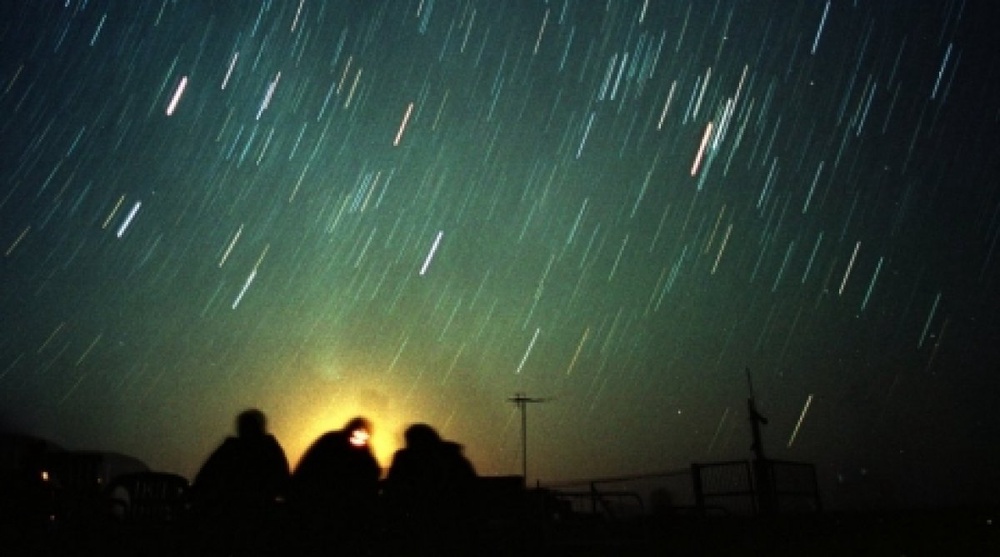
Kazakhstan residents can witness the peak of the Perseid meteor shower at night on August 11 and 12, the Head of the Moon and Planets Physics Laborotary of Astrophysical Institute after Vasily Fecenkov Viktor Teifel told Tengrinews.kz. According to the scientist, the unusual phenomenon is visible with a naked eye. He added that Perseids could be seen from any part of Kazakhstan, but it was better to watch it outside the cities, places with no artificial light. Weather conditions and smogs could also obstruct vision. The brightest meteors can be seen after midnight and in pre-dawn hours. The scientist said that the rate wouldn't be very high: up to 10 shooting stars per hour, but each of them would leave remain a trace of light. The Perseids would be entering the atmosphere in the Eastern part of the sky. According to NASA, around 90 to 100 bright and colorful meteors can be seen per hour during the meteor shower’s peak, which will take place August 11 and 12. This year the conditions for watching the celestial show are especially good: the waxing crescent moon will set early and even the fainter meteors will become visible. According to the European Space Agency, the Perseids are sand- to pea-sized bits of rocky debris ejected by the comet Swift-Tuttle, which is slowly disintegrating on its orbit around the Sun. Over the centuries, its remains have spread along the comet's orbit to form a stream of particles hundreds of millions of kilometres long. Earth's path around the Sun crosses the stream every mid-August. The particles, called meteoroids, hit our planet's atmosphere at about 60 kilometres per second (37 miles per second) -- each igniting in a white-hot streak of superheated air. They are named after the star constellation of Perseus from which they appear to spread out, and have been seen for about 2,000 years -- the earliest observations recorded in China. St. Lawrence was an early Christian deacon tortured to death by the Romans in AD 258. His saint's day of August 10 coincides with the Perseids buildup. A legend has it that Laurentius was martyred on a iron grill over a fire, during the ordeal he is said to have quipped to his persecutors: "Turn me over. I'm done on this side!" The annual Perseid meteor shower is considered to be one of Mother Nature’s most dazzling celestial displays. By Dmitry Khegay





Kazakhstan residents can witness the peak of the Perseid meteor shower at night on August 11 and 12, the Head of the Moon and Planets Physics Laborotary of Astrophysical Institute after Vasily Fecenkov Viktor Teifel told Tengrinews.kz.
According to the scientist, the unusual phenomenon is visible with a naked eye. He added that Perseids could be seen from any part of Kazakhstan, but it was better to watch it outside the cities, places with no artificial light. Weather conditions and smogs could also obstruct vision.
The brightest meteors can be seen after midnight and in pre-dawn hours. The scientist said that the rate wouldn't be very high: up to 10 shooting stars per hour, but each of them would leave remain a trace of light. The Perseids would be entering the atmosphere in the Eastern part of the sky.
According to NASA, around 90 to 100 bright and colorful meteors can be seen per hour during the meteor shower’s peak, which will take place August 11 and 12.
This year the conditions for watching the celestial show are especially good: the waxing crescent moon will set early and even the fainter meteors will become visible.
According to the European Space Agency, the Perseids are sand- to pea-sized bits of rocky debris ejected by the comet Swift-Tuttle, which is slowly disintegrating on its orbit around the Sun. Over the centuries, its remains have spread along the comet's orbit to form a stream of particles hundreds of millions of kilometres long. Earth's path around the Sun crosses the stream every mid-August. The particles, called meteoroids, hit our planet's atmosphere at about 60 kilometres per second (37 miles per second) -- each igniting in a white-hot streak of superheated air.
They are named after the star constellation of Perseus from which they appear to spread out, and have been seen for about 2,000 years -- the earliest observations recorded in China. St. Lawrence was an early Christian deacon tortured to death by the Romans in AD 258. His saint's day of August 10 coincides with the Perseids buildup.
A legend has it that Laurentius was martyred on a iron grill over a fire, during the ordeal he is said to have quipped to his persecutors: "Turn me over. I'm done on this side!"
The annual Perseid meteor shower is considered to be one of Mother Nature’s most dazzling celestial displays.
By Dmitry Khegay

 +7 (777) 001 44 99
+7 (777) 001 44 99















































